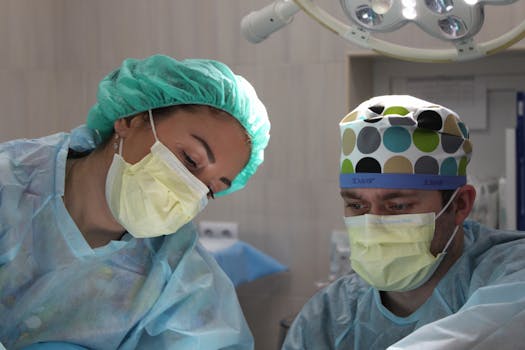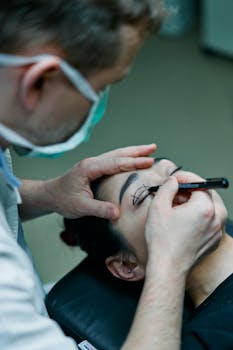If you’re exploring ways to tighten sagging skin and improve jawline definition without going under the knife, you’re likely researching a neck lift without surgery as a practical, lower-risk alternative to traditional surgery. Non-surgical approaches can reduce laxity, smooth platysmal bands, and address submental fullness with minimal downtime — but they vary in effectiveness, ideal candidates, and longevity. This article walks through the most common options, what to expect, and how to choose the right combination for your goals.
necklift without surgery: common non-surgical options
Advances in dermatology and aesthetic medicine have expanded non-surgical choices. Here are the main categories and how they work:
- Energy-based devices: Radiofrequency (RF) and ultrasound devices (e.g., microfocused ultrasound) stimulate collagen production in deeper layers of the skin. Multiple sessions spaced weeks apart can firm skin and improve texture.
- Injectables: Botulinum toxin can relax platysma bands for a smoother neck appearance, while dermal fillers can restore jawline projection and reduce the appearance of jowls. Deoxycholic acid (e.g., Kybella) targets small pockets of submental fat.
- Thread lifts: Dissolvable PDO or PLLA threads provide mechanical lifting and provoke a collagen response around the thread tracks, offering modest immediate lift with gradual improvement over months.
- Topical and prescription skincare: Retinoids, vitamin C, and targeted peptides improve skin quality, thickness, and tone, supporting other treatments and prolonging results.
- Liposuction alternatives: For those specifically asking about a chin neck lift without surgery, treatments like cryolipolysis or ultrasound-assisted fat reduction can reduce fullness beneath the chin without incisions.
Who is a good candidate?
Non-surgical neck procedures suit people with mild-to-moderate laxity, early signs of aging, or localized submental fat. Individuals with significant skin excess or heavy muscle laxity may still need surgical neck lift to achieve dramatic, long-term correction. Age, skin quality, lifestyle, and expectations guide the choice; a consult with a board-certified dermatologist or plastic surgeon can clarify candidacy and likely outcomes.
What to expect during treatment and recovery
Most non-surgical sessions are performed in-office and take 30–90 minutes. Discomfort varies by procedure—topical anesthetic is common before threads or intense energy treatments. Downtime is usually minimal: redness, mild swelling, and temporary bruising are common and resolve within days to a week. Results from energy-based devices and injectables can appear gradually over weeks to months; threads offer immediate lift with further improvement as collagen builds.
Combining treatments for better results
Combining therapies often yields the best, most natural-looking improvement. For example, targeted fat reduction under the chin plus RF skin tightening and neuromodulator injections for platysmal bands can address volume, laxity, and muscle-related neck lines. A chin neck lift without surgery frequently involves a tailored plan mixing fat reduction, fillers, and skin-tightening modalities to refine the jawline and reduce the appearance of a double chin.
Risks, limitations, and longevity
Non-surgical treatments are lower risk than surgery but are not risk-free. Potential complications include asymmetry, infection, contour irregularities, nodules, or nerve irritation (rare). Results are generally less dramatic and shorter-lived than a surgical neck lift; many treatments last from 6 months to 2 years, and maintenance sessions are common. Choosing an experienced provider reduces complication risk and improves aesthetic outcomes.
Before committing, review before-and-after photos, ask about provider experience with neck-specific procedures, and confirm realistic expectations. Consider lifestyle factors such as smoking and sun exposure, which impair healing and collagen production, diminishing results.
For broader context on health and wellness as foundational to aesthetic outcomes, reputable health resources can be useful; for general health information see https://en.wikipedia.org/wiki/Health. If you’re updating your daily skin and body care routine to support non-surgical results, you may find helpful tips in this article from our site: descriptive anchor text.
Cost considerations and planning
Costs vary widely by procedure, provider, and geographic region. Non-surgical options are typically less expensive upfront than surgery but may require repeat treatments over time, affecting the long-term cost. Ask for a full estimate including follow-up sessions and potential combination treatments. Many clinics offer financing plans or package deals for staged programs.
Final thoughts
A non-surgical neck lift pathway can deliver meaningful improvement for many people seeking a refreshed neck and jawline without the recovery and risks of surgery. Careful selection of procedures, an experienced provider, and realistic expectations are central to success. Small, well-planned interventions combined with good skincare and healthy habits often yield the most satisfying, natural-looking results.
- Takeaways:
- Non-surgical options include energy devices, injectables, threads, and fat-reduction techniques.
- Best for mild-to-moderate laxity; surgical lift may be needed for severe cases.
- Combining treatments and maintaining skin health improves outcomes and longevity.
Is a non-surgical neck lift painful?
Most procedures involve minimal to moderate discomfort. Topical or local anesthetic reduces pain for threads and intensive device treatments. Downtime is generally short, with mild swelling or bruising common.
How long do results last?
Longevity depends on the treatment: injectables and fat-reduction results may last months to a few years, while collagen-stimulating devices can provide gradual improvement lasting 1–2 years or longer with maintenance. Repeat treatments are usually required to maintain results.






